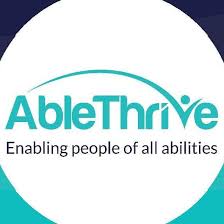|
(This blog tells my family's story. To see more, click "blog" at the top of this webpage.)
The logistics of swimming with quadriplegia evolved. Beth wore her one-piece suit to the Toledo or YMCA pool, but partway, up to her waist, with loose sweatpants over the suit and a T-shirt on top. In the locker room, I took off the shirt and pulled up the suit to put the straps in place. After a practice, I helped with the sweatpants over the wet suit before we headed home to shower. With improved, but not normal, balance, she asked to try the white plastic bench again. It worked with my help and we happily gave away the cumbersome metal shower chair with the rails. Five months after our Seattle trip, Beth achieved what I thought would be impossible. I watched at the YMCA pool as she advanced forward on her stomach for the entire 25-yard length for the first time, her arms working wildly below the surface but advancing at a snail’s pace. Her legs dragged behind. She conquered the basic balance of forward motion—without approximating a swim stroke. I expected her to stop at the wall after the 25 yards. Instead, she took only a moment to take a bigger breath before pushing off with her arms and going a little farther. Back on the wall to rest, she flashed a happy smile my way. Priceless. I returned her smile. All of my worrying and waiting for her optimism to plunge into depression had been wasted. Thankfully. For Beth, the achievement was only a small step toward a bigger goal. At the swim practices that followed, she worked on increasing the forward distance. And tried to add the arm movements of the butterfly, which seemed more doable at first than the breaststroke and freestyle. Her attempts to circle her arms out of the water while moving forward resembled a clumsy, erratic butterfly. Her backstroke had started in a similar way before finding a regular rhythm. I admired her tenacity, but I wasn’t sold on her mission to get better and swim all the strokes. No one knew how far she could go. I expected an impassable physical barrier to abruptly halt her progress. Not Beth. Legs and hands that didn’t work were a given. She accepted that her damaged arm and trunk muscles would not strengthen nearly as easily or nearly as much as perfect ones. Willing to wait weeks and months for small bits of progress, Beth tapped into a well of stubborn teenage persistence.
0 Comments
 (This blog tells my family's story. To see more, click "blog" at the top of this webpage.) Beth, 16, passed her driving test on a cold autumn day. Comfortable behind the wheel of her little blue car, she held a knob on the easy-turn steering wheel with her right hand. Her left hand pushed or pulled a bar to accelerate or brake. Driving was fun, but not getting in and out of the car by herself. She didn’t want to use a sliding board. She scooted to the far right edge of the chair cushion and put one hand on the driver’s seat and the other on the chair cushion. The goal was to lift her trunk high enough with her arms to bridge the gap. A far-off goal, but Beth still kept trying. Every time. I stood right behind her and intervened with a boost so she wouldn’t fall. I quickly learned that the belt loops of her jeans ripped easily, so I grabbed the side of her jeans instead to lift her over the gap. When Beth was with others, some still helped by grabbing the belt loops. At first, I sewed up rips and the holes they left. But when they just ripped again, I gave up. At that time, her shirts covered the holes. Just like the bottom of her jeans always hid her socks. Important things for my usually easy-going 16 year old. ;-) Another driving problem: the empty wheelchair after she was in the drivers seat. Beth liked the idea of taking off the wheels of the chair and lifting the pieces across her body to the passenger seat. Unfortunately, it wasn’t practical between the high back of her chair and her strength. The mechanized topper on her car had seemed like the solution. However, the wheelchair needed to be folded and positioned properly on the hook. Plus, the topper was temperamental. When Beth pushed the toggle switch on the remote control to raise the wheelchair, it did not always fall in place at the top properly. Which meant that the car would not start. She resigned herself to the fact that driving would not be a completely independent activity. Even so, she had no regrets about her decision to drive a car instead of a van with a lift. Beth always made time for friends. On the November opening day of the second Harry Potter movie, The Chamber of Secrets, she talked me into letting her drive with no one else in the car while she picked up her best friends. I put her wheelchair in the hatchback without taking it apart. The chair was out of her reach, but I made sure that her cell phone was charged and close by. I was on call but not needed until after the movie when she pulled in the driveway by herself. About five months after our Seattle trip, Beth surprised me by achieving the impossible... (This blog tells my family's story. To see more, click "blog" at the top of this webpage.) Two and a half years after Beth’s spinal cord injury, I expected a gradual catharsis with my weekly counseling. But sessions still only stirred up tearful regrets for causing the accident. I thought that I must be doing something wrong, that I failed at therapy. After, I sat in the car, breathing deeply, until I carried no visible baggage home. I scheduled more appointments, hoping to find the person I had been before the accident. I was determined to redeem myself with Beth, though others needed me, too. And I needed them. I was intensely grateful for the people in my life. I wished gratitude could cure anxiety. Trying to look normal was a challenge on days when worst case scenarios dominated my thoughts. I had to concentrate to pay attention, even with my immediate family, though there was no lack of love or genuine interest. Unlike Beth, I had no grand goals. What I basically wanted — after magically erasing Beth’s injury — was the absence of pain. No headache that ebbed and flowed. No guilt and depression. No anxiety that also ebbed and flowed. Some days, Beth emanated vulnerability, a lifelong quad perpetually haunted by scary health risks: autonomic dysreflexia, serious infections, bladder stones, blood clots, and pressure sores. On other days, she looked to me like the happy and healthy teenager that she actually was. As a high school junior, Beth never saw the need to say no to extra activities. On top of AP classes and too much homework, she volunteered for fundraisers with the Raptors and for community events with the National Honor Society. She wrote for the school newspaper and worked on the yearbook. She followed her brother’s lead and earned a spot on the Quiz Bowl team. Her specialty: literature. A doctor also asked her to exchange emails with another teenager with a new spinal cord injury. Beth needed me less often, but I was there when she did. At the YMCA pool, on her forward motion quest, she progressed to spending more time with her head above water than under it. I read a book again while I sat on the bleachers, instead of watching every minute. One evening, she finished a backstroke lap as her high school’s swim team arrived to practice. As a few friends stopped to say hello to her, their head coach, Peggy Ewald, introduced herself to Beth... A fortunate accident. Serendipity.  Beth as a toddler :-) Beth as a toddler :-) (This blog tells my family's story. To see more, click "blog" at the top of this webpage.) Beth’s first swimming summer ended with her first Sectional meet in August of 2002. When we drove through Indianapolis to Indiana University, we noticed the unusual billboard again, the same one we saw in Seattle. Quadriplegia at Harvard: A+. Sectionals was another packed to the hilt USA Swimming meet. “A swimmer who uses a wheelchair," Beth said, "is still an unusual sight at most swim meets." Able-bodied swimmers stood on the raised blocks to begin races for all the strokes except one: the back, which always started in the water. Most used their feet and legs to surge off the wall. Beth tried to gain a bit of momentum with her hands pushing off the wall. With rare exceptions, backstroke swimmers alternated their arms simply because it was faster. For Beth, the double-arm backstroke resulted in a better time, despite her head dipping under. She improved slightly on her swim times, but aimed higher. When her junior year of high school started, Beth scheduled a GTAC practice late afternoon every Friday. With the Toledo pool filled to capacity, she learned how to share a lane while a coach supervised her backstroke laps. At the end of every practice, she tried to get out of the pool by herself. Beth pressed her back into a corner of the pool and put her hands up on the ledge behind her, to try to lift herself up and out of the water. She rose just a few inches before falling forward, but she kept trying, regardless. Every practice. In addition to swimming on Fridays in Toledo, Beth asked to go to our Tiffin YMCA with me once or twice a week. I helped her into the water. Her practices without a coach focused on forward motion, the first step in her plans to master all of the swim strokes. I watched her closely from the deck bleachers, since she spent more time under water than above it. She somehow could get herself almost to the halfway point of the 25 yard length with a few short bursts to the surface for rapid breaths. Then she had to give her arms a break and roll onto her back to breathe more deeply. Even if by some miracle she could progress continuously on her stomach for the whole length of the pool, a bigger hurdle loomed: learning the mechanics of the butterfly, breaststroke, and freestyle, with legal modifications for legs that dragged behind and hands that could not cup the water. I worried. And worried. Would failing to achieve this goal tip Beth over the edge to depression? And without her buoyant optimism, how would I be able to move forward? Guilt and anxiety plagued my days and nights. What if overused antibiotics lost their effectiveness? That was how the quad in Green Springs had died of pneumonia in the hospital room next to Beth’s. Or would a blood clot travel to her heart or brain? I was sadly stuck in worst-case scenarios. Thankfully, Beth was not. “My next goal is to make the U.S. National Team that will attend the 2004 Paralympics in Athens, Greece.”  (This blog tells my family's story. To see more, click "blog" at the top of this webpage.) “For the first time, I began training with swim coaches,” Beth said at 16. “I am one of two swimmers with a disability on GTAC (Greater Toledo Aquatic Club).” Beth drove us in her little blue car to swim practice once a week; the GTAC pool was an hour’s drive away. She was a good driver, and sometimes joked with a quote from Rain Man: “I am an excellent driver.” Even so, when another driver cut her off on the highway, I couldn’t stop myself from crying out. I was instantly transported to the anguish and fear of the accident. I quickly apologized for my reaction and praised her for handling the close call well. During a long morning practice, a coach sometimes jumped in the lane with her to better direct and experiment, since no instructions existed for teaching a quad to swim. They worked on her backstroke. The afternoon of the same day, we drove across town to St. Vincent, the hospital where she had stayed in intensive care. Her idea, not mine. “I volunteered in the outpatient physical therapy department for one afternoon a week,” Beth said. “This was a particularly interesting assignment for me since I was still going to outpatient physical therapy as a patient at a different hospital closer to my home. I liked being busy with bed-making and clerical work, and it was easy to relate to the staff and patients.” Beth initiated visits to the Tiffin YMCA pool with me where she approached every practice on her own with a singular focus: swimming forward, not back. With hands that could not cup the water and useless legs that dragged behind, she tried to propel her arms underwater in front of her body. Not attempting a swim stroke, she concentrated on just forward motion several seconds/inches at a time, undeterred by the sheer difficulty of what looked impossible. When her arms faltered and she couldn’t keep her head above water, she rolled on her back to breathe and to get to the wall where she took a break before trying again...and failing again. And again. After only a handful of GTAC practices, we drove to her first competition as a member of the club. The Ohio Senior Meet in Athens took place one month after Seattle. Still shy, Beth rarely practiced with swimmers her own age, so she stayed close to me at the meet instead of hanging out with the other GTAC teenagers in a designated corner. Swimmers amassed everywhere. Beth took the lead when we had to pass through the crowd. She repeated “excuse me” until she said it loudly enough to pass by. Sometimes she reached up and tapped someone lightly with her fist to get their attention. In the packed bleachers, some of the moms were perfectly coiffed and dressed to a T. Never fancy, I was easily intimidated. I was learning that club membership involved expensive dues, swim gear, meet fees, and a wide range of travel-related costs. The backstroke was Beth’s only option at the Ohio Senior Meet. During a race, she swam the final leg by herself. She didn’t swerve in the lane as she had in Seattle four weeks before. The crowd on the deck and in the bleachers applauded as she finished. |
Cindy KolbeSign up for my Just Keep Swimming Newsletter by typing your email address in the box. Thanks!Categories
All
Archives
November 2022
|



 RSS Feed
RSS Feed











